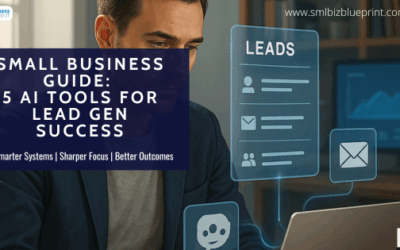Within your list of customers, there are various groups of people.
The people who make up these groups are from a variety of places and have unique needs, traits, pain points, and expectations for your business in terms of communication, support, and more.
Customer segmentation is the process of separating your customers into groups based on the certain traits (e.g. personality, interests, habits) and factors (e.g. demographics, industry, income) they share.

Segmentation offers a simple way of organising and managing your company’s relationships with your customers. This process makes it easy to tailor and personalise your marketing, service, and sales efforts to the needs of specific groups. This helps boost customer loyalty and conversions.
The key to creating and maintaining successful relationships with your business’s different customer groups is understanding their preferred styles of communication and their unique needs.
This helps you effectively and efficiently meet and exceed their expectations.
Why do segmentation?
Segmentation results in marketing campaigns with better engagement and more loyal customers. Audience segmentation generates leads more effectively than non-targeted messaging.
By knowing their customers, marketers can send messages and promotions that address the unique needs of their various customer segments. This leads to higher brand affinity and engagement.
You then can focus on marketing to audience segments that are most likely to purchase or can be expected to generate higher average order values.

Here’s the process break-down of how to segment an audience:
- Step 1: Define your target customer personas.
- Step 2: Identify criteria that differentiate personas.
- Step 3: Analyse the available customer data. Collect additional data as needed using surveys or customer feedback.
- Step 4: Ensure the customer data used as segmentation criteria is available in the platform you will use to send messages.
- Step 5: Segment the audience using the chosen criteria.
There are a number of other reasons why customer segmentation is so important.
Here are some of the things this process can help your business accomplish:
- Learning about your customers on a deeper level so you can tailor your content to their unique needs and challenges
- Creating targeted campaigns and ads to resonate with and convert segments of customers
- Improving your customer service and customer support efforts by understanding and preparing for challenges different groups are likely to experience
- Increasing customer loyalty with customised content and interactions
- Understanding who your most valuable customers are and why
- Communicating with segments of customers via preferred channel or platform.
- Meeting specific groups of customers where they are
- Identifying new opportunities for products, support, and service efficiently
Now that you understand what customer segmentation is and why it’s a process worth investing time in, let’s cover the most common models and types of segmentation.

Categories To Segment
1 Demographic Segmentation
Demographic segmentation is where you segment your audience demographic variables such as age, gender, education, income, marital status.
2 Geographic Segmentation
Geographic segmentation is where you segment your audience on locations where people live, or shop at, a particular location. It could include Country, state, city, and town
3 Psychographic Segmentation
This is where you segment your audience so that you focus on compatible customers. It includes personality, attitude, values, lifestyles and interests.
4 Technographic Segmentation
This could include mobile-use, desktop-use, apps, and software. your business might find that your biggest clients are using certain marketing automation software. These pieces of software indicate more than just the fact that a company is using marketing automation.
5 Behavioural Segmentation
Behavioural segmentation is the process of grouping customers according to their behaviour when making purchasing decisions. This includes Tendencies and frequent actions, feature or product use, and habits
6 Needs-Based Segmentation
The customers’ needs-based segment tells you what you should and shouldn’t talk about in marketing and sales dialogue. It focuses on product/ service must-haves and needs of specific customer groups
7 Value-Based Segmentation
Value-based segmentation is where you group customers in terms of the revenue they generate and the costs of establishing and maintaining relationships with them.
8. Website Activity
Website activity is anything your customers do while engaging with your website. For example, you could segment customers based on the first page they interact with. Or, you could segment them based on how many times they’ve visited your home page or clicked on a certain page element like a call-to-action.
9. Last Customer Engagement
You can learn a lot about customer relations from the last interaction a customer has with your business. If it was a positive interaction, they might be ready for more marketing messaging or a specific promotion based on when they are in the customer’s journey.
If the interaction was negative, you might want to ping your customer service or success teams to proactively reach out and strengthen the relationship.
10. Ecommerce Activity
Ecommerce activity is any action a customer takes in your online store. For instance, abandoned carts are a very popular customer segmentation option.
You can also segment customers based on the products they’ve purchased or the product pages they’ve seen, but haven’t converted on.
11. Number of Purchases
The number of purchases that a customer makes is a primary factor in determining customer value . The more purchases they make, the more valuable they are to your business.
12. Average Purchase Value
The same can be said for average purchase value. The higher this value is, the more overall value the customer provides to your business.
13. Product Attributes
Some groups of customers require specific features from your products in order to use them. For example, if your website isn’t web-accessible , you could be alienating individuals with disabilities.
Make sure you’re aware of customers with these needs so you can cater to them and won’t miss out on valuable conversion opportunities.
14. Service Needs
Service needs are the services that customers require when interacting with your business.
If they are a new customer they might want to undergo an onboarding process to learn how to use your products or services.Identifying these needs will ensure your customers are properly supported.
15. Delivery Method
Your product isn’t very useful to your customers if you don’t deliver it at the right time or in the right way. This segmentation option allows you to categorise individuals who have specific needs in regards to how they wish to receive your product or service.
16 Customers who Purchase a New Product
If they are a new customer they might want to undergo an onboarding process to learn how to use your products or services
17 Inactive Subscribers
Segment your audience based upon who have been on your list for at least 6 months but have never opened or clicked an email. You can then tailor campaigns built around timing of purchase.
18 VIP Customers
This may be where you segment based upon customers who have purchased at least X number of times before or have spent over Y amount of money
19 Customers with a High Predicted Customer Lifetime Value (CLV)
You may want to segment based upon lifetime value. You can identify which of your customers who are likely going to be future VIPs
20. Past Purchases
Segmenting by past purchases is another simple way to optimise your audience. The easiest way is to start sending out email recommendations for similar items or accessories that would go well with their previous purchase.
Or, if a customer bought something that requires replacement, refilling, or renewal, you can send out targeted emails based on their potential needs.
You can make an educated guess about when it might run out – and send an email after a few months suggesting a reorder.
21. Amount Spent
If you sell a range of high and low dollar items, the amount spent can be a great segmentation strategy.
Use customer expense history to determine which customers are likely to buy more expensive items and which are more interested in affordable, low dollar items.
Then you can send out targeted emails featuring products that are actually in each person’s price range.
An example is to segment customers into three groups:
- VIPs – Shoppers with high disposable incomes
- Sales shoppers – People motivated by discounts
- Brand shoppers – Customers who showed loyalty to a brand, but were price-conscious
You then can segment offers on non-monetary offers (exclusive invites and events), and send discount offers ranging from 10-30%.
22. Position in the Sales Funnel
Segmenting by where your audience is in the sales funnel is one of the most valuable ways to customise your messaging.
Someone at the top of the funnel should be receiving different targeted emails than those at the bottom.
An example, is a group of brand-new subscribers, their emails should be more generalised, giving a range of the products or features you offer – such as a series of welcome emails introducing them to the brand.
If they’ve been signed up for a while and interacted with certain email content (such as clicking through a link), you can use this information to determine what exactly they’re interested in and send more targeted emails on that product or service.
23 Past Purchasing Behaviour
You want to segment your previous buyers out from new buyers, as you will be engaging differently with different sets of people based on the relationships you have already built.
To this end, your segments can be differentiated based on buying patterns and even the types of products they’re purchasing.
The key will be to anticipate their future needs so that you can show them what they need before they even really realise it.
24 Key Social Channels
Understanding how and where people are consuming your content can go a long way towards how you market your goods and services to a different audience.
It can tell you about the types of things they prefer as well as how they interact with their friends.
There are also plenty of ways you can use your social channels to target, so the two go hand-in-hand in various ways when you are working on a strategy.
Segmenting your customers will allow your marketing and sales efforts to be more efficient and productive and in time more profitable.




